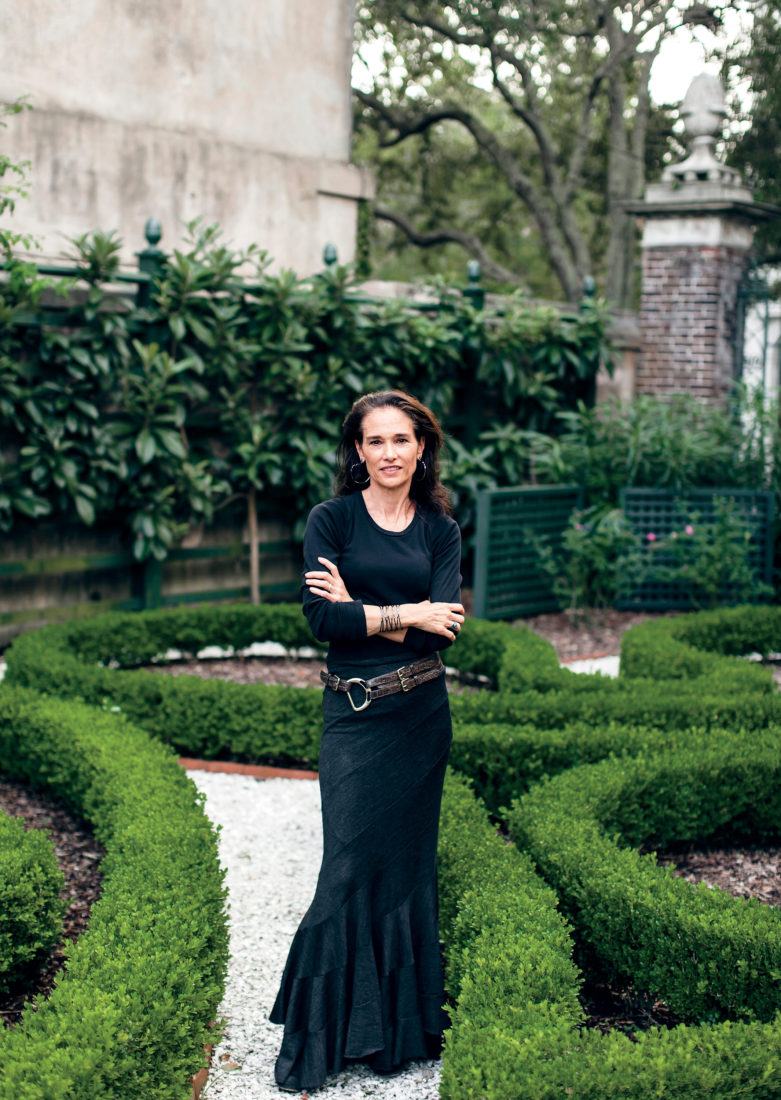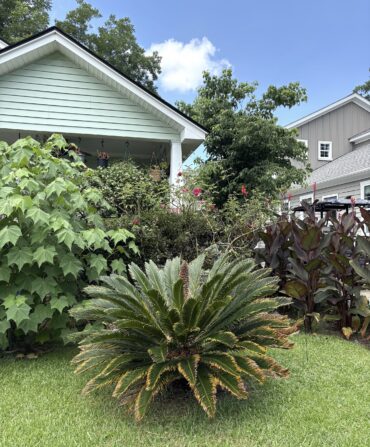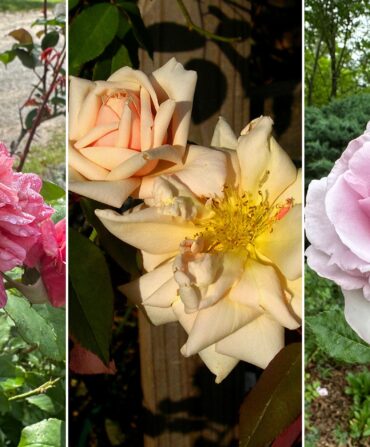Margaret Bradham Thornton is no stranger to buried treasure. The author of the recent novel Charleston, she grew up in the South Carolina city, frequently hunting for Native American artifacts along the Edisto River. Later, as the editor of Notebooks, a collection of Tennessee Williams’s journals, she spent a decade elbows-deep in documents and diaries. So when she and her husband purchased the historic Pineapple Gates House in Charleston, she couldn’t help but wonder what might lie within the soil. Although the house was built around 1801, the property dates back to a 1694 Lords Proprietors’ Grant. Perhaps this dirt had stories to tell.
Thornton spent her childhood just a few blocks away and liked to bicycle past the house, curiously peeking through the wrought-iron gates. For as long as she could remember, the expansive lawn was just that, a lawn. Though school and work would take her away from Charleston, the acquisition of the property enabled a homecoming—and the chance to return the garden to its nineteenth-century glory.
Before picking up a shovel, Thornton assembled a team headed by architect Glenn Keyes, restoration expert Richard Marks, and C. Allan Brown, a landscape historian renowned for his academic rigor. At the time, she was also working on the Williams project, what she calls her “no-stone-left-unturned phase.” “I spent a lot of time trying to separate fact from fiction,” she says. “I would only write what I could prove. We had that same approach here.”

Photo: Gately Williams
The house’s elegantly unassuming entrance.
All agreed that the lawn was not original. After all, lawns in the modern sense didn’t exist until the invention of the lawn mower, in 1830, and didn’t come into vogue in Charleston until fifty years later. The size of the lot and the configuration of the walls implied something grander in scale and style. So they started digging. Archaeologist Martha Zierden, who had excavated land beneath dozens of historic Charleston structures, began by sectioning off the lawn into quadrants. Her team sifted through dirt layer by layer, uncovering the usual lost or discarded suspects—hair combs, buttons, coins, wine bottles—as well as more significant finds: two Revolutionary War cannonballs, 1760s delft tableware, and the most stirring of all, a brass slave tag from 1803.
One and a half feet down, the dirt gave way to a faint pattern. Crushed oyster shells hinted at ornate winding pathways: the ghostly imprint of an antebellum garden. “The expectation was that Charleston was conservative and we would see rectangular beds, so this was a real surprise,” Zierden says. “The discoveries changed the way we think about garden structure in early-nineteenth-century Charleston.”

Photo: Gately Williams
The formal garden was restored to the orginial circa 1818 designs.
Meanwhile, Brown combed through diaries and letters of the period for any mention of the garden. He examined Civil War photographs taken by Mathew Brady and found an image of one of the garden walls that had crumbled by the early twentieth century. With painstaking detail, he reconstructed the original circa 1818 garden design, attributed to the home’s second owner, George Edwards, a wealthy planter.
Three “rooms” divide the length of the property, beginning with a formal garden most likely intended to be viewed from above, when family members and guests socialized on the second-story piazza. Loquat trees hug a trellis, while oyster shell pathways frame petite boxwood lozenges in a rosary pattern, with a restored folly as its focal point.

Photo: Gately Williams
Path Finder
Oyster shells and boxwoods dominate the circa 1818 garden re-created by Margaret Bradham Thornton.
By contrast, the second garden, accessed by hidden doorways cut through the tall hedge, seems spare, accented by an unearthed double serpentine pathway fronting a small grid of orange trees. The rear garden, originally dedicated to vegetables and barnyard animals, remains in its 1950s redesign by landscape architect Benito Innocenti. (Downtown residents aren’t as accepting of cows and goats as they were in the nineteenth century.) Otherwise, nothing is permitted that did not exist in 1818.
“I remember a twinge of regret when Allan and Martha presented the garden plan because the lawn I had bicycled past as a child would be gone forever,” Thornton says. “But the uncovered garden feels as if it has always been there. Which, in fact, it has.”









